I bought a couple of statuettes in a charity shop in
Clitheroe the other day and they got me thinking about their subject – the
Greek goddess, Athene (or Athena).
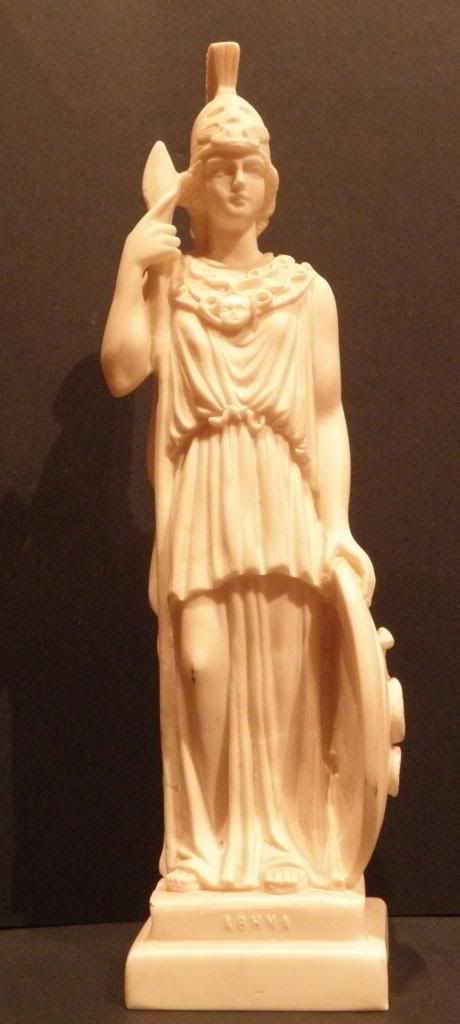 |
| Athena |
There are a number of versions regarding the origins of
Athene, as you might expect with such an important deity, as the assorted
ancient stories were told and retold by people who tried to assimilate them
into a coherent, definitive whole. Plato, in his Timaeus [22a], writing
about the Egyptian city of Sais, says,
“The founder of their city is a goddess, whose name in the Egyptian tongue is Neith, and in Greek, as they aver, Athena: the people are great lovers of the Athenians and claim a certain kinship with our countrymen.”
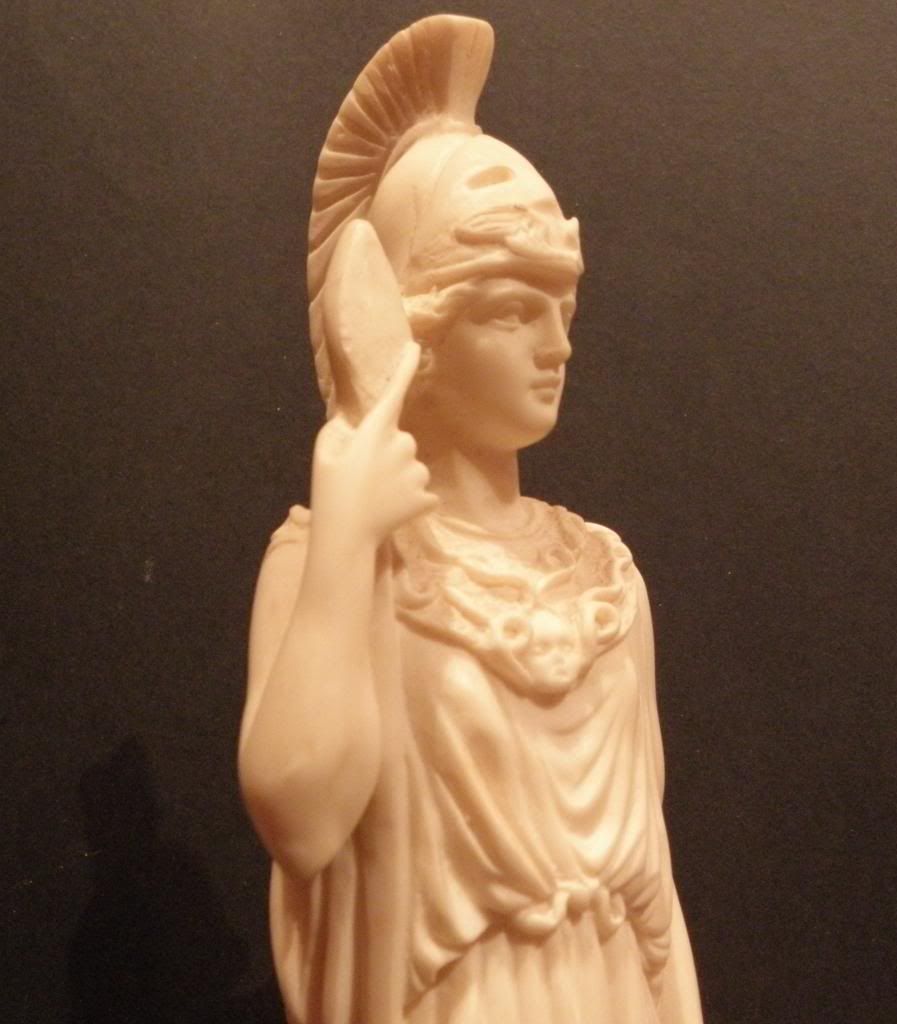 |
| The Head and Lance of Athene |
Without getting into the controversy that the
Athenians, and the Greeks, came out of Africa, there are parallels between
Neith and Athena, although the etymological links claimed by some scholars are
strained and somewhat fanciful to say the least. However, it is just one
possibility. One says she was the daughter of the winged giant Pallas, whom she
killed when he tried to rape her. Another places her on Minoan Crete, prior to
the birth of Zeus, but the most accepted story is that she was the daughter of
Zeus (Homer calls her such in the Iliad, Book v, 880).
 |
| Detail of the Head |
Zeus’s first
wife, Metis, became pregnant, but on the advice of Gaea and Uranus that he
would be overthrown by one of Metis’s progeny, Zeus swallowed her whole but she
remained alive, and pregnant, inside him (see Hesiod Theogony 889-892).
He began to suffer from headaches and so Hephaestus took his double-headed,
bronze axe and struck him on the forehead, from which sprang Athena, with a
terrifying shout, fully grown and armoured.
“By the art of Hephaestus and his brazen-forged axe, at the summit of her father's head, Athene, springing upwards, shouted with an exceeding great cry: and Heaven and mother Earth shuddered at her.”Pindar, Olympian Ode VII.
 |
| Athene born from the head of Zeus |
From this account,
Athena was the daughter of the most powerful of the gods and the Titaness of
wisdom, and she was a harmonious combination of these qualities of her parents.
She was not a representation of any physical power manifested in nature, but
rather she was an ethical protectress of the state and social institutions, and
the patroness of all that preserved them, from the walls and fortresses to the
harbours. She fostered agriculture and invented both the plough and the rake,
taught men how to yoke oxen and looked over the breeding of horses, giving
mankind the bridle, another of her inventions. She also created the olive tree,
to benefit humankind.
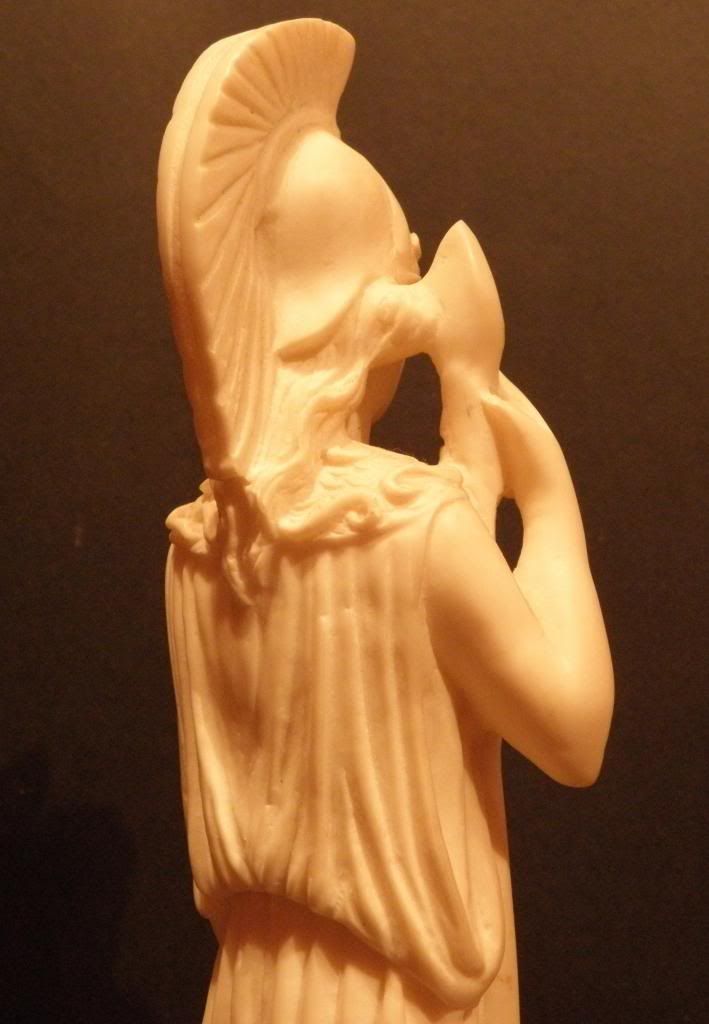 |
| Rear of the Head of Athene |
Other, later, writers attribute almost all of the useful
and beneficial inventions to her, from numbers, art, navigation, and the
chariot to trumpets, flutes and weaving. In this last, she was involved in a
contest with Arachne, a mortal weaver who claimed to be more skilled than the
goddess. In one version, Arachne lost the contest and hanged herself in
embarrassment; Athena turned the rope into spidersweb and Arachne herself into
a spider, who continues to spin to this day (hence, spiders are called arachnids).
The gifts of Athena lead the Athenians to adopt her as their patron and they
named their city in her honour, although she was worshipped equally throughout
Greece.
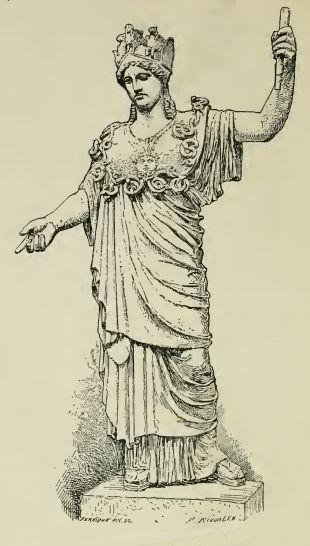 |
| View of a variation of Athene |
As the goddess of War, Athena differed from the bellicose war gods such
as Ares; she advocated prudent war, it is said that she did not own weapons but
borrowed them from Zeus. Rather than glorying in battle for its own sake, she
avoids conflict but will fight for a just cause and will champion the righteous
hero in his strife.
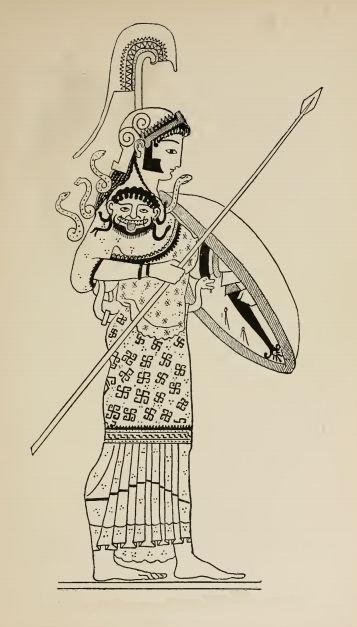 |
| Representation of Athene from a Greek Vase |
In her martial aspect, Athena wears a crested helmet,
carries a lance and carries the Ægis, the terrible shield that not even Zeus
can resist. In some versions, the shield bears the head of Medusa, the gorgon,
slain by Perseus and which turns anything that looks upon it into stone (the Gorgoneion).
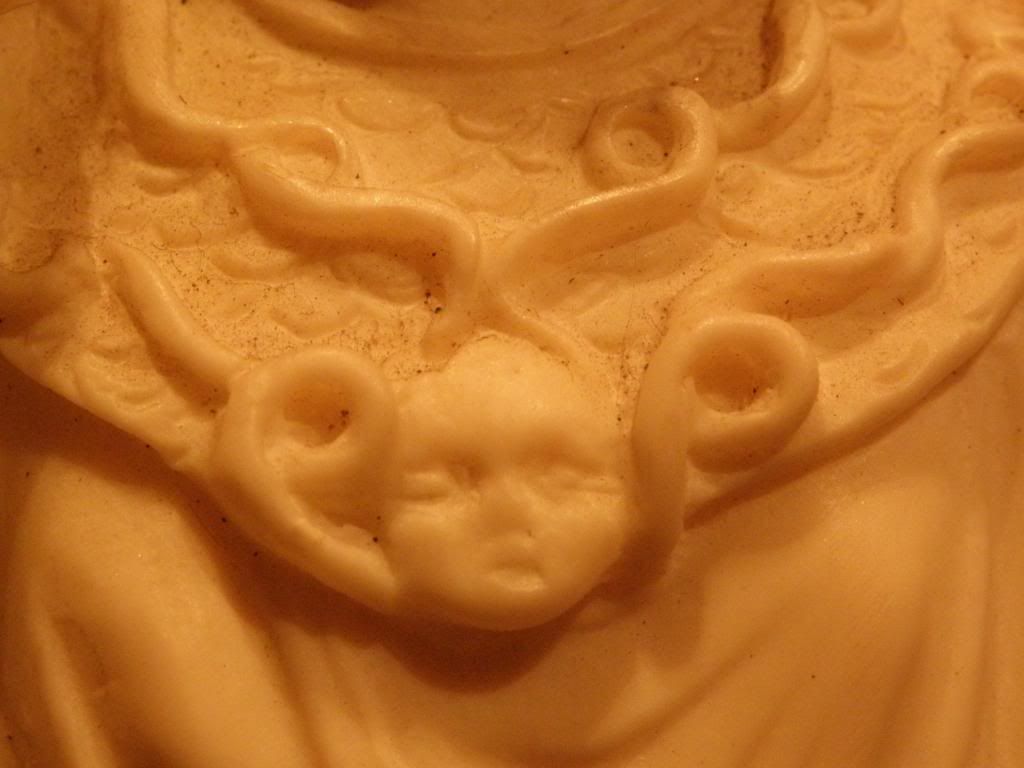 |
| The Gorgoneion on Athena's breastplate |
In another version, the gorgon’s head is worn on Athena’s breastplate and on
the shield is a serpent, Erichthonius, which was born when Hephaestus attempted
to rape Athena and spilled his semen on the earth. Athena raised the child
herself but hid him secretly in a box, which was given into the care of the
daughters of Cecrops, the king of Athens, warning them not to open it. Two
daughters, Aglaurus and Herse, disobeyed and opened the box, saw either the child,
a serpent or a hybrid of the two, the sight of which drove them insane; they
threw themselves to their deaths from the highest point on the Acropolis.
Erichthonius went on to become king of Athens and instituted the Panathenaic
festival, the great celebration of Athena in the city that took place on the
Acropolis; the serpent borne by Athena was his emblem.
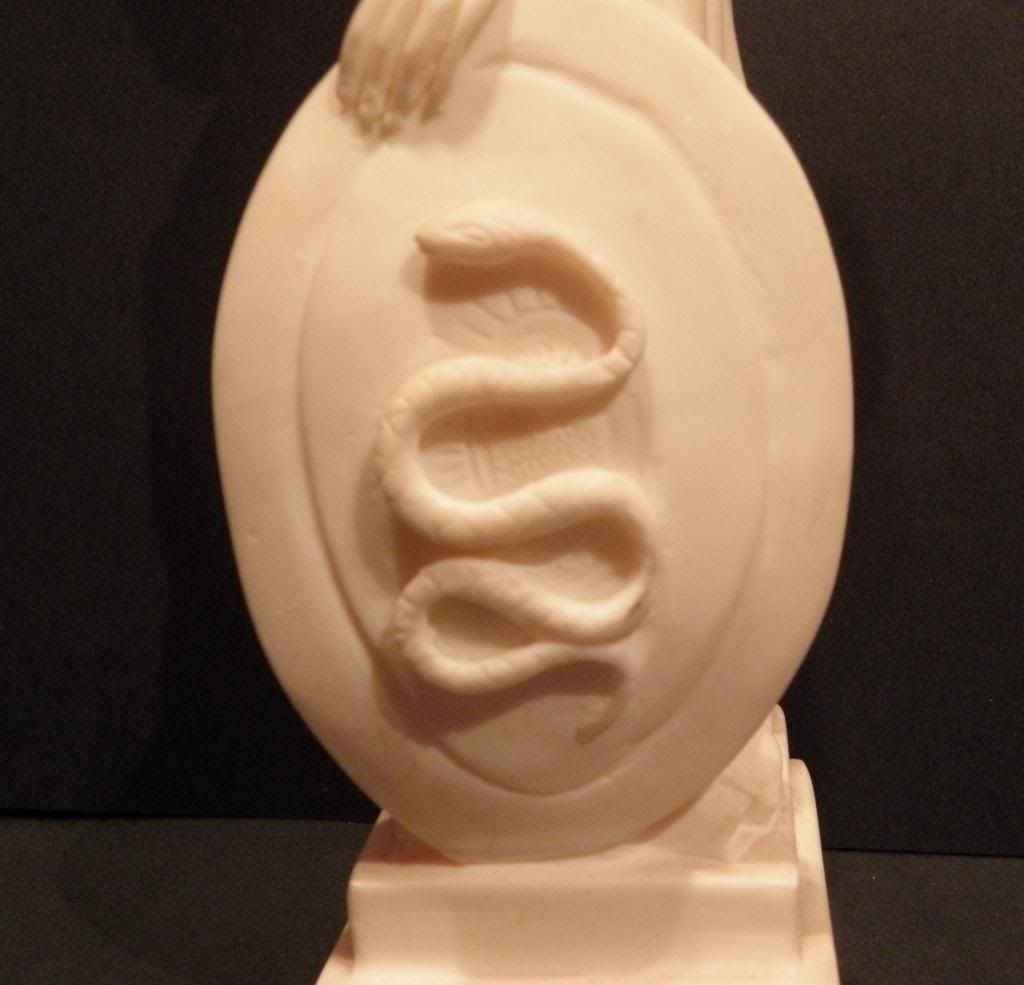 |
| The Shield with the Serpent |
Another symbol of Athena
was the owl, a bird long noted for its supposed wisdom, in her case named Glaucus,
from the Greek Γλαΰκος
– ‘glaring (eyes)’. Unfortunately, the wisdom of owls is not manifest in
reality – an owl has cylindrical eyes almost the size of human eyes but its
skull is about the size of a golf ball and in consequence its brain is tiny in
relation to the rest of its head, to allow for the accommodation of the large
eyes.
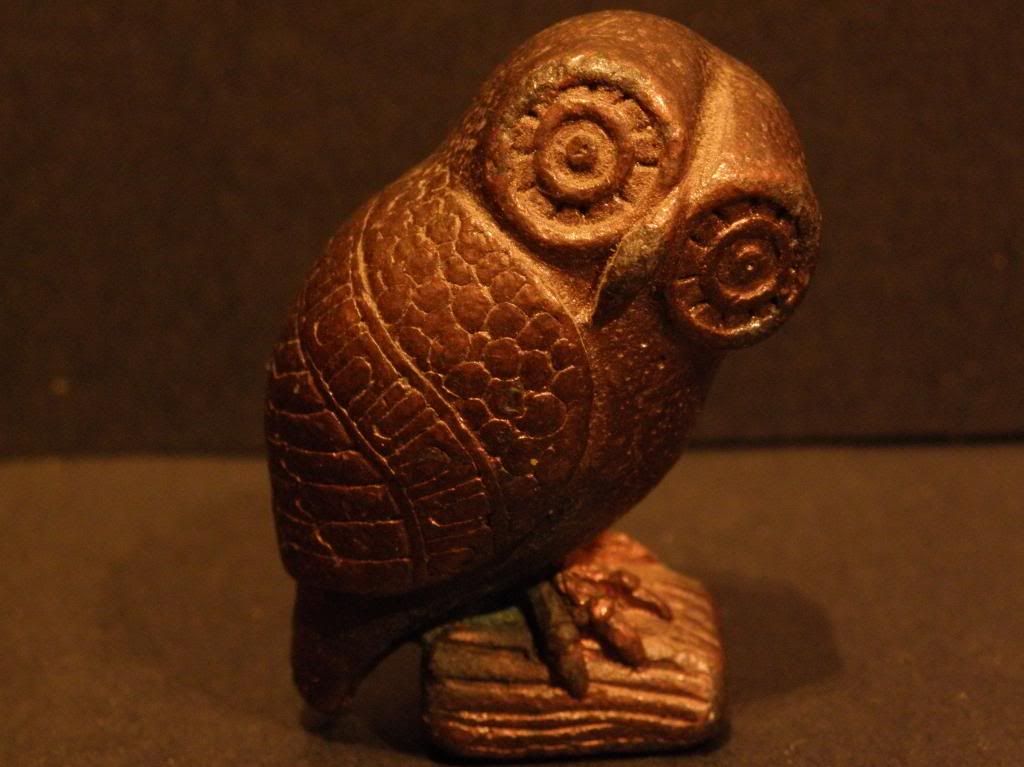 |
| Glaucus - the Owl of Athene |
The Greek for ‘owl’ is Οτρίγζ ‘strix’ - ‘screecher’ which is also the root of our word
‘strident’, coming from the cry of the owl; in Latin it is ‘ulula’ –
from which we also get ululation – ‘a cry of lamentation, wailing’, in
Old English it is ule - ‘owl’,
with connections to Sanskrit ululih – howling, Lithuanian uluti –
a howl, and Gaelic uileliugh – a lamenting cry.
Tomorrow, the other statuette.
Typical Greek Empress costumes are white with gold trim and these are real pretty. For many who like some color, you can also get some which also have shades of blue, pink, maroon and other colors in addition to the basic white. more information
ReplyDelete